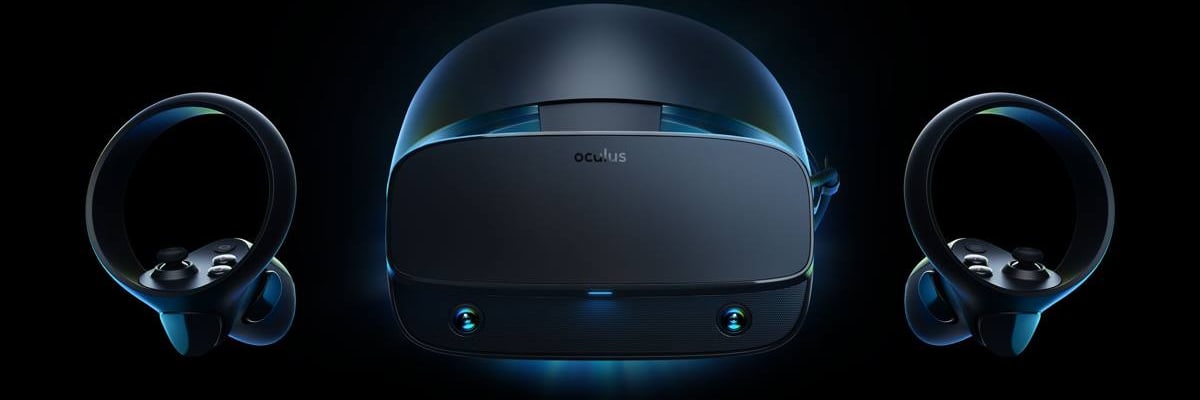
Return navigate_next
Oculus Quest 2 versus Oculus Rift S VR Headsets
November 29, 2022 *
Virtual reality: it’s a technology that sci-fi dreamed about for decades - since at least the 1960s. Early efforts in the 90s popped up as (really cheesy) games at amusement parks and the like. That same decade, Nintendo even tried to glom onto the idea with its ill-fated Virtual Boy head-mounted console.
Fast forward 25 years or so, and virtual reality has made some massive strides forward thanks to the significant advances in consumer technology. Today, many people have had at least limited interaction with virtual reality (VR) through their phones. (Remember Pokémon Go?)
With the advances in technology, we’re finally seeing the advent of consumer VR gaming headsets. The top company in this space is Oculus (also known as Meta). Curious to learn more about Oculus and what its VR headsets can do? Read on.
What Is Oculus?
Oculus is a company focused on one thing: producing cutting-edge personal virtual reality (VR) gaming experiences. Founded in 2012, the company produces head-mounted displays packed with positioning sensors and paired with hand-grip controllers, allowing users to interact with games in a more dynamic and intimate way than ever before.
In 2016, Oculus released its first consumer model, the Oculus Rift CV1. The year prior, Oculus partnered with Samsung to help develop Samsung Gear VR.
In 2021, Oculus was renamed to Meta when Facebook was rebranded. However, many people still refer to Meta's VR headsets as Oculus headsets.

What Is VR Gaming?
VR gaming asks you, the player, to interact much more deeply with the game environment. To look around the game world, you must physically move your head up, down, and around.
Want to swing your sword? Then you need to physically swing your arm in that sort of motion. Yes, there are limited button controls as well. But the big things setting apart VR gaming are movement control and the way the environment responds to that movement.
There’s a wide appeal here. VR can be a refreshing and, in a way, more natural experience compared to PlayStation and Xbox gamepads. The Wii showed us that swinging your arms can sometimes be more natural than just smashing complex button combos, and that’s even more true when you feel immersed in the environment.
Is VR Gaming for Everyone?
That’s a great question, and we’d have to say no. While VR gaming can be an immersive, mind-blowing experience, it’s not everyone’s cup of tea. First, some casual gamers won’t enjoy the complexity. If your ideal video gaming experience is a one-handed smartphone game like Candy Crush, the VR experience may be a bit much.
There’s also the issue of motion sickness. Since you’re physically moving around while immersed in a screen, those prone to motion sickness might not fare too well. Oculus recommends you start slow, with simpler, calmer games before jumping into high-movement, high-action titles. That’s certainly smart, but the truth is, some folks just won’t handle the motion well.
It’s also worth noting that most games require some degree of physical mobility and freedom of movement. Those with motor impairments or other physical limitations should investigate this aspect closely before purchasing.

The Latest Units from Oculus
Oculus has released a handful of models over the past four years. Many of the earlier models have been discontinued, as is common in the tech world. The two flagship systems available right now are the Oculus Quest 2 and Quest Pro. Most gamers should purchase the Quest 2 instead of the Pro. The Pro is probability expensive and costs over $1,500, while the Quest 2 costs only $399.99.
Another model is the Rift S. Meta no longer sells the Rift, but you can still find the device online for less than $200. We’ll walk you through the differences between the Quest 2 and Rift S below.
Oculus Quest 2
The Oculus Quest 2 is an all-in-one VR gaming system that can run any title in the Oculus Quest Store all on its own. The headset and controllers are wireless, and the headset itself tracks both head and body movement, translating them into perfect VR precision. 3D positional audio helps your ears make sense of your environment - no matter where you’re facing.
The Quest 2 can optionally be connected to your gaming PC, and in this mode, it gains access to the Rift catalog as well.
The Quest 2 is the better choice for most VR gamers. If you find yourself missing the more advanced titles and you own a capable PC, you can still access the Rift catalog using a Link cable.

Oculus Rift S
Those who want the ultimate in VR gaming will need a capable computer to bolster their Oculus and should opt for an Oculus Rift S. Designed for longer, more intense gaming sessions, the Rift S is built for the serious VR gamer. The device is powered by your PC, and as a result, it can play higher-powered titles in the Oculus Rift store, as well as those on Steam.
The Rift S can play more games, but it can’t do anything without a capable PC powering it. Again, Meta no longer sells the Rift S, but you can purchase the Rift from online sellers.
VR Gaming Is Risky. Protect Your Investment Today!
Are you bringing home a new Oculus anytime soon? Before you go swinging wildly around the room wearing your expensive new Oculus, it’s best to get protected. Upsie offers extended warranties on VR headsets as well as all other consoles. With Upsie, you get accidental damage protection from things like drops, as well as extended protection against defects or failures. And you’ll pay less with Upsie than with those big box stores!
Check out Upsie’s Oculus extended warranties, and see how much you can save!
Learn More About Console Warranties:
* This article is over 6 months old and may or may not be updated.
